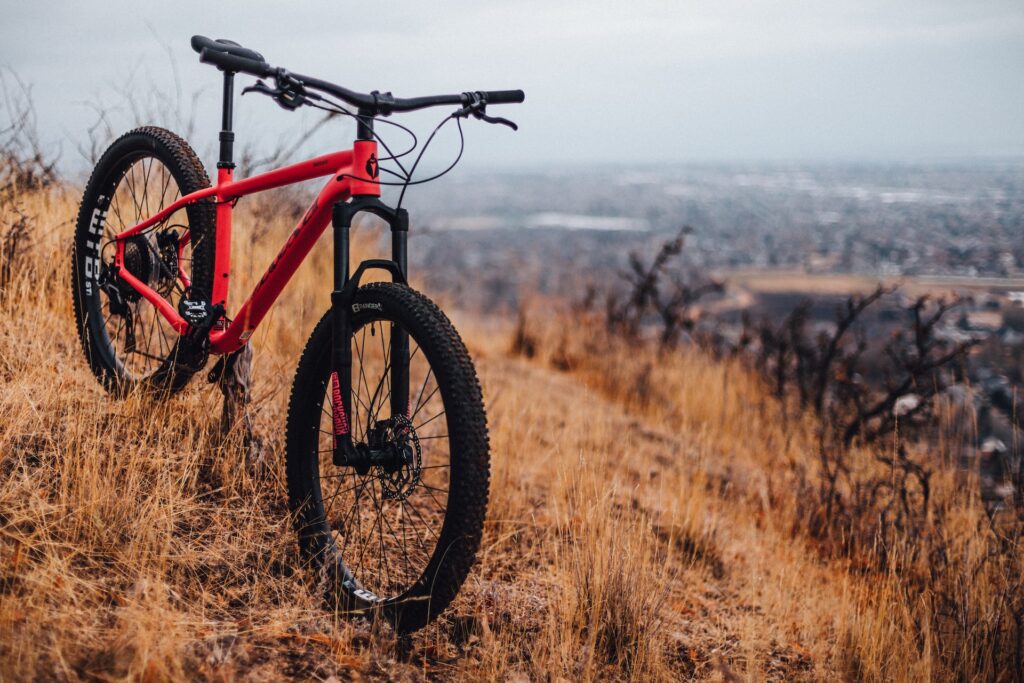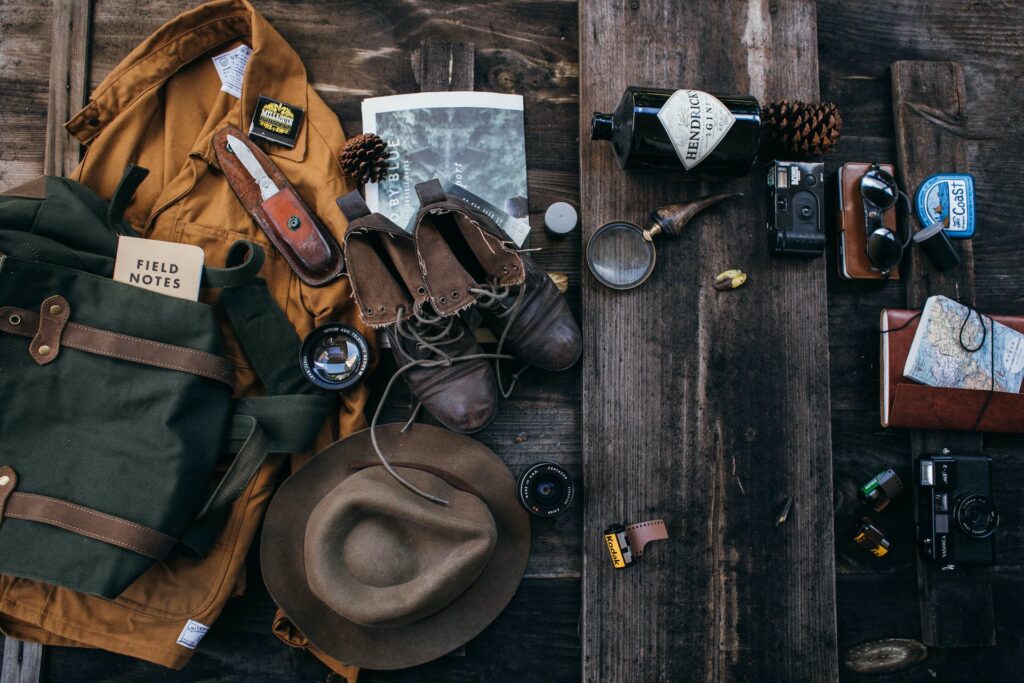Intro
If you’re in the market for a new mountain bike, one of the most important factors to consider is the size. Riding a bike that is too big or too small can not only affect your comfort and enjoyment, but it can also lead to potential injuries. With so many different sizes and styles of MTBs on the market, it can be overwhelming trying to figure out which one is perfect for you. But fear not, in this blog post we will guide you through the process of how to find the right MTB size for you and riding style. So grab your helmet and let’s dive in!
Understanding the Importance of a Right MTB Size for You

Finding the right size mountain bike is crucial for a comfortable and enjoyable riding experience. While it may be tempting to just pick any bike off the shelf and go, riding a bike that is not the right size for you can lead to a range of issues, from discomfort to potential injuries.
The importance of a right MTB size cannot be emphasized enough. When you ride a bike that is too big, you may struggle to reach the handlebars comfortably or extend your legs fully while pedaling. This can lead to strain on your back, shoulders, and knees. On the other hand, riding a bike that is too small can result in cramped positioning, limiting your ability to generate power and control the bike properly.
Bike size is not a one-size-fits-all situation. It varies based on factors such as your height, inseam length, and riding style. Teenagers and girls may require different bike sizes due to their body proportions. Riding a right MTB size thet fits you well allows for optimal power transfer, stability, and maneuverability, enhancing your overall riding experience.
Having a properly sized bike not only increases comfort but also minimizes the risk of injuries. With the right fit, your body will be in a more natural and balanced position, reducing the strain on your joints and muscles. This can prevent long-term issues like back pain, knee problems, and overuse injuries.
In the next sections, we will explore how to assess your physical dimensions, understand different mountain bike types and their sizing, test ride bikes for the perfect fit, fine-tune your bike’s fit, and make the most of professional fitting services. By following these steps, you’ll be on your way to finding the perfect size mountain bike for your body and riding style. So, let’s continue our journey towards a comfortable and exhilarating ride!
Assessing Your Physical Dimensions for right MTB size

Now that you understand the importance of riding a properly sized mountain bike, it’s time to assess your physical dimensions. Determining the right bike size for your body is crucial in order to have a comfortable and enjoyable riding experience.
The first step is to measure your frame size. To do this, stand against a wall with your feet shoulder-width apart. Place a book between your legs and raise it until it is snug against your crotch. Measure the distance from the top of the book to the floor. This measurement is your inseam length, which is a key factor in determining the right MTB size.
Next, consider your height. Mountain bikes come in various sizes, typically measured in inches or centimeters. Manufacturers usually provide size charts that correlate inseam length and height to help you choose the right bike size. Make sure to check these charts when shopping for a mountain bike.
It’s also important to consider bike size for teenagers and girls, as they may have different body proportions compared to adults. Teenagers may require a smaller bike size than adults, even if their height is similar. Similarly, girls may require a different bike size due to their body structure. Paying attention to these nuances will ensure a better fit and more enjoyable riding experience.
Once you have these measurements in mind, you can confidently shop for a mountain bike knowing what size to look for. Keep in mind that these measurements are just a starting point, and you may still need to test ride different sizes to find the perfect fit.
Understanding Different Mountain Bike Types and Their Sizing

When it comes to mountain bikes, there are a variety of types and styles to choose from. Each type is designed for specific terrains and riding styles, so it’s important to understand the different mountain bike types and their sizing before making a decision.
One of the key factors to consider when determining the right MTB size is the frame size. Frame size refers to the length of the bike’s main triangle, which includes the seat tube, top tube, and down tube. It is typically measured in inches or centimeters and is crucial in ensuring a comfortable fit. Manufacturers often provide size charts that correlate inseam length and height to the appropriate frame size, so be sure to refer to these charts when selecting your bike.
In addition to frame size, it’s also important to consider bike size for teenagers and girls. Teenagers may require a smaller bike size than adults, even if their height is similar. Similarly, girls may require a different bike size due to their body structure. It’s important to take these factors into account to ensure a proper fit and an enjoyable riding experience for riders of all ages and genders.
When choosing a right MTB size, it’s also important to consider the specific type of riding you plan to do. There are several different types of mountain bikes, including cross-country, trail, enduro, and downhill. Each type is designed for a specific purpose, and their sizing may vary slightly. For example, cross-country bikes are typically more lightweight and have a more aggressive riding position, while downhill bikes are built for stability and control at high speeds.
Test Riding Bikes for right MTB size for you

When it comes to finding the right MTB size, there’s no better way to ensure a proper fit than by test riding bikes. While assessing your physical dimensions and understanding different mountain bike types can provide a good starting point, test riding allows you to experience firsthand how a bike feels and performs.
During a test ride, pay attention to the bike’s frame size. The frame size refers to the length of the bike’s main triangle, which includes the seat tube, top tube, and down tube. Make sure the frame size aligns with your inseam length and height, as this is crucial for a comfortable fit.
When test riding, also consider right MTB size for teenagers and girls. Teenagers may require a smaller bike size than adults, even if their height is similar. Similarly, girls may require a different bike size due to their body structure. Be sure to test ride bikes that cater to these specific sizes to find the perfect fit.
While test riding, take note of how the bike handles. Does it feel stable and balanced? Can you easily maneuver and control it? These factors are just as important as the frame size. A bike that fits well but feels unstable or difficult to handle may not be the right choice.
Don’t be afraid to ask for adjustments during the test ride. The bike shop staff should be willing to make minor adjustments to the seat height, handlebar position, and other components to help fine-tune the fit. This will give you a better idea of how the bike can be customized to your specific needs.
Fine-Tuning Your Bike’s Fit

Once you have found a right MTB size that fits your physical dimensions and feels comfortable during a test ride, it’s time to fine-tune the bike’s fit to ensure optimal performance and comfort. Fine-tuning your bike’s fit involves making adjustments to various components such as the saddle height, handlebar position, and pedal placement.
First, let’s talk about saddle height. The saddle should be adjusted so that your leg is almost fully extended when the pedal is at its lowest point. This allows for efficient pedaling and prevents unnecessary strain on your knees. To adjust the saddle height, simply loosen the seat post clamp and raise or lower the saddle until it’s at the desired height. Then, tighten the clamp securely to prevent any slippage while riding.
Next, let’s focus on the handlebar position. The handlebars should be adjusted to a position that allows you to maintain a relaxed and natural grip. Your arms should have a slight bend at the elbows and your shoulders should be relaxed. To adjust the handlebar position, you may need to loosen the stem bolts and rotate the handlebars to the desired angle. Make sure the handlebars are securely tightened after making any adjustments.
Finally, let’s consider pedal placement. The position of your feet on the pedals can impact your power output and comfort while riding. Generally, your feet should be positioned so that the balls of your feet are over the center of the pedals. This allows for optimal power transfer and reduces the risk of foot discomfort. Adjust the pedal position by loosening the pedal bolts and repositioning the pedals to your liking. Once again, ensure the pedals are tightened securely.
Remember, fine-tuning your bike’s fit is an ongoing process. As you gain more experience and spend more time on your bike, you may find that further adjustments are needed. It’s also worth mentioning that professional fitting services can provide valuable insights and recommendations for optimizing your bike’s fit. They have the expertise and experience to make precise adjustments and ensure you are getting the most out of your mountain biking experience.
Making the Most of Professional Fitting Services Choosing Right MTB Size
Professional fitting services can be a valuable resource when it comes to ensuring that your mountain bike is the perfect size for you. These services are typically offered by bike shops or specialized fitting studios and involve working closely with a trained professional to make precise adjustments to your bike’s fit.
During a professional fitting session, the expert will take into consideration various factors such as your physical dimensions, riding style, and any specific concerns or goals you may have. They will carefully measure your body proportions, including inseam length and height, to determine the appropriate frame size for you. This is especially important when it comes to bike size for teenagers and girls, as their body structures may require different sizing considerations.
Once the frame size is established, the fitting professional will make adjustments to the bike’s components to ensure optimal fit and performance. They will fine-tune the saddle height, handlebar position, and pedal placement to ensure that your body is in the most natural and efficient riding position possible. They may also make additional adjustments based on your riding style, such as adjusting suspension settings for a smoother ride on technical trails.
One of the biggest benefits of professional fitting services is the expertise and experience that the fitter brings to the table. They have a deep understanding of bike geometry, biomechanics, and the intricacies of different mountain bike types. They can provide valuable insights and recommendations based on their knowledge and your unique needs, helping you maximize your riding experience.
Professional fitting services also often offer follow-up appointments or check-ins to ensure that the bike fit is working well for you over time. As you gain more experience and spend more time on your bike, your fit preferences may change or your body may adapt. These check-ins allow for any necessary adjustments to be made, ensuring that you are always riding in the best possible position.
In summary, making the most of professional fitting services can greatly enhance your mountain biking experience. These experts can provide personalized recommendations, fine-tune your bike’s fit, and offer ongoing support to ensure that you are getting the most out of your ride. Don’t hesitate to take advantage of their expertise and with right MTB size make biking adventures even more enjoyable.




